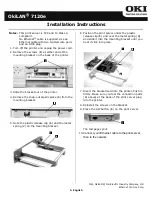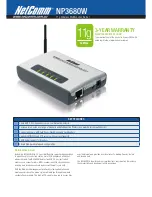
110
IGEL
Technology GmbH
IGEL Zero HDX
5.09.100
DHCP
Via the
Dynamic Host Configuration Protocol
, the thin client receives its IP address,
network mask, DNS, gateway and other network configurations from a DHCP server.
DHCP is enabled by default for LAN 1 (internal). DHCP options can be enabled in the
DHCP Client
menu. A list of standard options is available. However, you can also
define your own options.
BOOTP
Via the
BOOTP
, the thin client receives its IP address, network mask, DNS, gateway
and other network configurations from a BOOTP server database.
The transferring of a
setup.ini
file or a boot script is not supported. BOOTP is not used to call
up a boot image from a server and boot this image, in spite of what the term may imply.
Specify IP address
manually
Configures the network settings manually instead of searching for a DHCP server.
Ensure that the fixed IP address that you enter is not used by another computer in
your network.
If you have to use a gateway to forward the data packages to and from the target
network, click on
Enable
and enter the gateway IP address.
Terminal name
Give the local name of the thin client. Otherwise, the standard name
IGEL <MAC
address>
will be generated.
Enable DNS
Configures the DNS - Specify the
standard domain
in which the device will work as
well as the IP address of up to two
name servers
which will be queried one after the
other.
Manual overwrite
DHCP settings
Manual entries overwrite the standard route, the domain name and the DNS servers.
Dynamic DNS
registration
Here, you can automatically report the current IP address of the thin client to the
DNS. The
DHCP
and
DNS
methods are available. If you select
DNS
, you may have to
specify a
private TSIG key for DNS authentication
.
You can find instructions for dynamic DNS registration via DNS in an
FAQ document
(
http://edocs.igel.com/index.htm#10203508.htm
).
















































